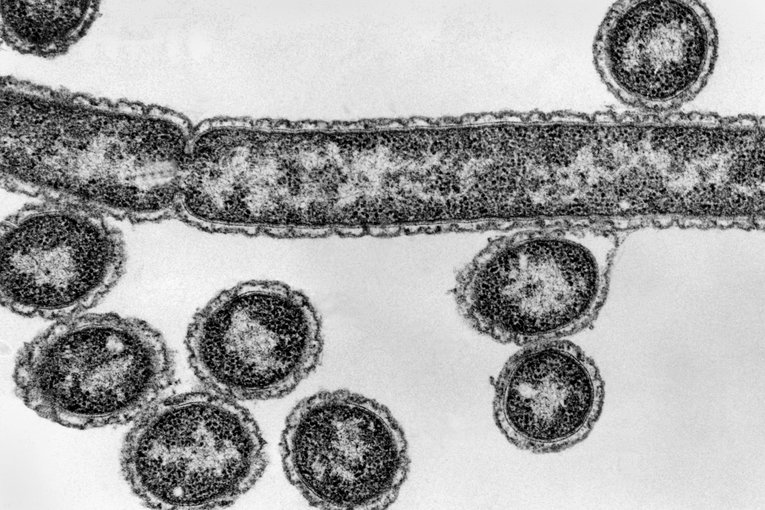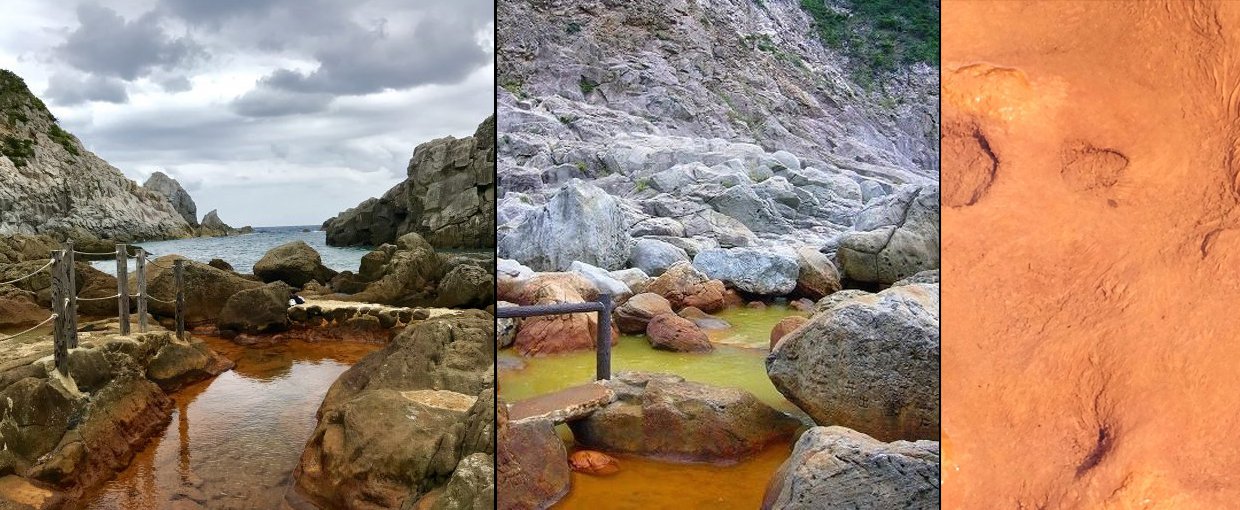
When NASA first began to explore the Solar System, scientists were not sure what they would find on the surfaces of planets like Mars and Venus. When space missions revealed Mars to be a frigid desert, and Venus a boiling cauldron, void of any obvious signs of life, astrobiologists began to wonder… what are the limits of habitability for life as we know it? How hot is too hot? How cold is too cold? How much acid can cells handle, and how little water can life survive on?
Answering questions like these opened an entire field of study known as extremophile research, where scientists examine the adaptations of organisms in conditions that are considered ‘extreme’ for life on Earth. These hardy lifeforms can help us better understand how life as we know it might originate, evolve, and reproduce in harsh environments in the Solar System and beyond.

Image of Thermus aquaticus under a microscope.Image credit: University of Wisconsin–Madison.
The First Known Extremophile
On a tour of extreme environments on Earth, a good place to start is with terrestrial hot springs. These environments were the first to draw the interest of astrobiologists that study the limits of life on Earth, and they are arguably the first environment in which an extremophile was isolated and documented by scientists. This extremophile, dubbed Thermus Aquaticus, is a species of bacteria that came from Yellowstone National Park in the United States.
T. Aquaticus was discovered by Thomas Brock (1926-2021) and colleagues in a sample collected from one of Yellowstone’s famous terrestrial hot springs, known as Mushroom Pool, in 1964. The organism was described in a seminal paper in 1969, authored by Brock and Hudson Freeze (now a Director and Professor at the Sanford Children’s Health Research Center).
The fact that organisms lived in the boiling waters of Yellowstone was not unknown before Brock and his team arrived. If you visit Yellowstone, you can see filaments and other structures in the water without a microscope. However, scientists hadn’t yet taken the time to carefully examine life in the hot spring environments.
In an interview from the University of Wisconsin at Madison, Brock explains, “I was stunned by all these microbes that were living in all these hot springs… and nobody seemed to know anything about them.”
The discovery of T. Aquaticus not only changed our perception of the limits of life, but this simple organism has also been critical to technologies that have shaped entire disciplines of science, from genetics to medicine.
Click here to read more about Thomas Brock and his discovery of T. Aquticus.

Astrobiologist Jack Farmer (Arizona State University) studies an outflow colored by microorganisms that flows from the hot springs at El Tatio in Chile.Image credit: ASU, Photo by Steve Ruff.
Hotbeds of Astrobiology Research
Terrestrial hot springs are found all over the world, and they are inhabited by extremophile organisms that use unique mechanisms to stay alive. These springs are where geothermally heated water from underground rises to the planet’s surface. They can act as a source of water, energy, and nutrients for living cells.
The water boiling up from below can carry a wide variety of minerals and reduced chemical species that certain microbes can use as a source of energy. The composition of the water depends on many different factors, such as its source and the types of rock and soil it travels through. The varying conditions mean that different hot springs around the world can support unique populations of microbes.
The temperature and composition of the water also has different gradients – for instance, the water is hotter closer to the source of the spring. This gradient means that diverse organisms can evolve over time to inhabit their own special place in the environment on microscopic scales.
It’s not just the heat that challenges life’s survival in hot springs. Some springs have water that is very acidic, others have water that is extremely alkaline. Gases at concentrations poisonous to humans, and other animals, bubble up with the water. The rock and liquid can contain heavy metals like arsenic and lead, along with lots of other minerals and particulates. Some pools can be extremely salty, and can be rich in things like potassium and sulphate. High temperatures also mean less dissolved oxygen, so many hydrothermal pools are low in oxygen content.
Astrobiologists have studied hot springs in Yellowstone and around the world in places like New Zealand, Russia, Japan, Chile, and Iceland. Some of the hottest springs studied so far can be found on Russia’s Kamchatka peninsula, in the Uzon Caldera. This region is thought to be the site of a volcano that collapsed 200,000 years ago. Microorganisms have been found here living in pools of up to 206 degrees Fahrenheit (97 degrees Celcius).

Scalding hot water from an underground thermal spring creates an iron-rich environment similar to what existed on Earth 2.5 billion years ago (Left and Center). Filaments created by microbes as they deposit iron oxide at the bottom of small channel (RightImage credit: Nerissa Escanlar/Marc Kaufman.
Life in Hot Springs
Terrestrial hot springs on Earth are inhabited by organisms known as thermophiles, meaning ‘heat loving.’ Most of these thermophilic organisms are single celled archaea and bacteria, and are sometimes classified according to the amount of heat they can survive: thermophile, extreme thermophile, and hyperthermophile.
Terrestrial hot springs were the first place in which astrobiologists spotted thermophiles, but they aren’t the only super-heated environments where such organisms live. Thermophiles can also be found in places like deep sea hydrothermal vents, and even in decaying organic matter in peat bogs or home compost piles.
The multitude of harsh conditions present in terrestrial hot springs also means that it isn’t only thermophiles that live in these environments. There are acidophiles, alkaliphiles, and many other types of organisms. Sometimes scientists find extremophiles that use multiple adaptations to survive (polyextremophiles).

NASA’s Perseverance Mars rover used its dual-camera Mastcam-Z imager to capture this image of “Santa Cruz,” a hill within Jezero Crater, on April 29, 2021, the 68th Martian day, or sol, of the mission.Image credit: NASA/JPL-Caltech/ASU/MSSS.
Hot Springs and the Search for Life
The chemical precipitates that are found in hot spring waters can entomb and preserve cells, making hot springs (or even ancient hot spring sites) a good place to look for biosignatures left behind by past life. This is one reason that astrobiologists also look for geological signs of ancient hot springs on planets like Mars. Based on what we know about these environments on Earth, ancient hot springs might be a great place to find fossilized evidence of microbes if they ever inhabited Mars in the planet’s past.
There is a plethora of evidence for volcanic hydrothermal environments in Mars’ past, and the potential presence of hot springs on Mars has played an important role in the selection of landing sites for missions. The Spirit rover detected evidence of hot spring activity in Gusev crater. NASA’s newest Mars rover, Perseverance, is currently roaming across Jezero crater, where it is looking for biosignatures in the layered delta in the west. When a crater like Jezero is formed by an impact event with an object from space, there is a huge release of energy and heat. This heat can form hydrothermal systems on the planet that persist for tens of thousands to tens of millions of years (depending on the size of the impact).
While it is not clear yet whether Perseverance will be able to examine an ancient hot spring site up close, the rover will be collecting samples of material that will one day be returned to Earth for astrobiologists to study. Many scientists are hopeful these samples could be our opportunity to answer the question, “was Mars ever inhabited by life?”
Resources:
Life in the Extremes Trading Cards
Check out the series of astrobiology trading cards: Life in the Extremes at https://astrobiology.nasa.gov/classroom-materials/tradingcards/Image credit: NASA Astrobiology.
Life in the Extreme:
Life in the Extreme: Radiation
Life in the Extreme: Surviving Beneath a Glacier, Part I
Life in the Extreme: Surviving Beneath a Glacier, Part II
Life in the Extreme: Terrestrial Hot Springs
Life in the Extreme: Polar Deserts
Life in the Extreme: Hydrothermal Vents
Related:
Paving the Way for Astrobiology in Earth’s Extremes: Thomas Brock
Hot Springs & the Search for Life with Dr. Eric Boyd (Ask an Astrobiologist)
Lack of Oxygen not a Showstopper for Life
2.5 Billions Years of Earth History in 100 Square Feet
Looking for Life on Mars — in Chile
References:
Brock. Life at High Temperatures. Science, 158.
Brock and Freeze (1969) Thermus aquaticus gen. n. and sp. n., a Nonsporulating Extreme Thermophile. Journal of Bacteriology, 98(1).
Des Marais and Walter (2019) Terrestrial Hot Spring Systems: Introduction. Astrobiology, 19(12). DOI: 10.1089/ast.2018.1976
Horgan et al. (2020) The mineral diversity of Jezero crater: Evidence for possible lacustrine carbonates on Mars.
Ruff and Farmer (2016) Silica deposits on Mars with features resembling hot spring biosignatures at El Tatio in Chile. Nature Communications. DOI: 10.1038/ncomms13554


